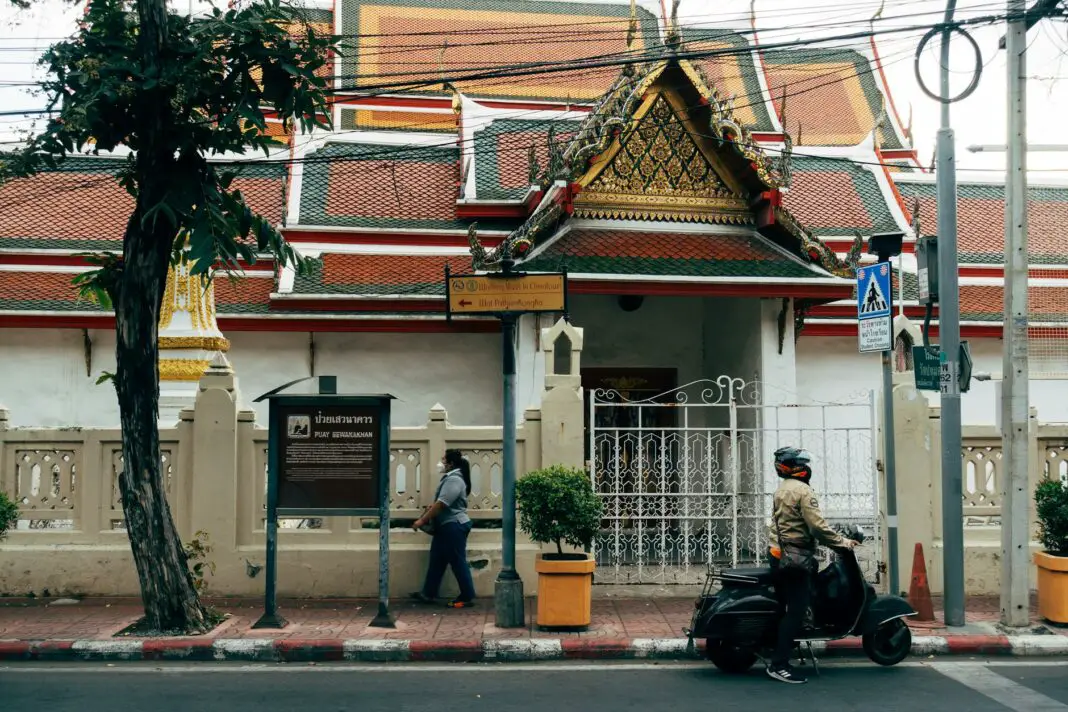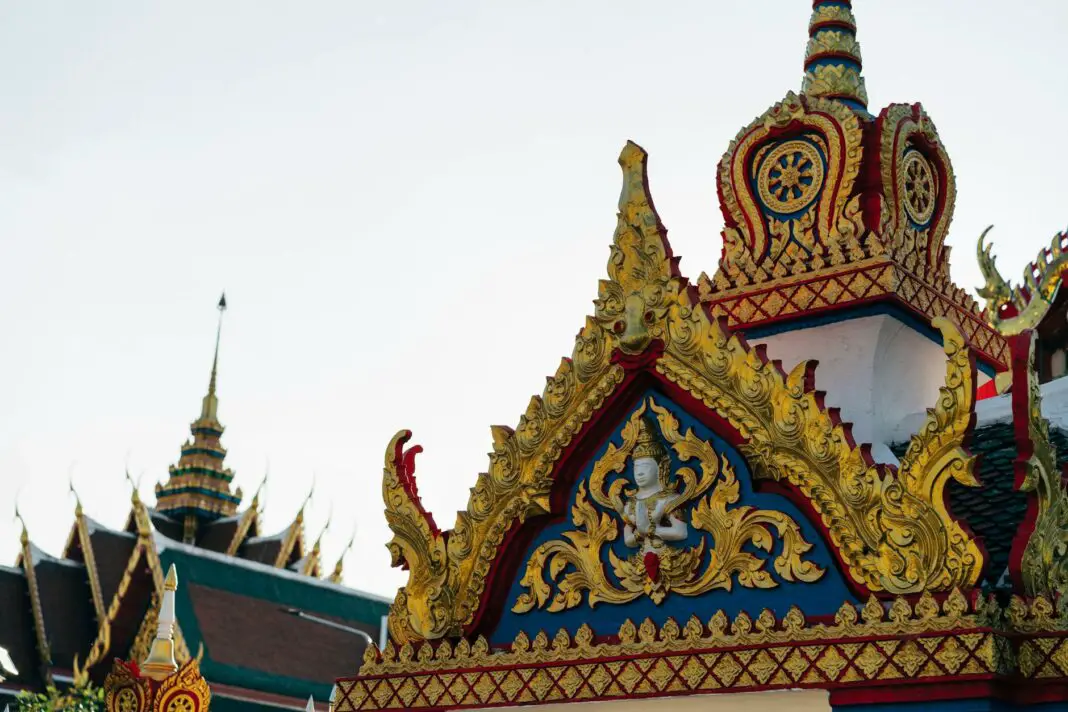Thailand is a treasure trove of culture, art, and history, and its murals are often overlooked gems that beautifully encapsulate the essence of Thai life and heritage. Did you know these stunning murals not only adorn temples and palaces but also tell stories of ancient traditions, folklore, and spiritual beliefs? In this blog post, we will take you on an unforgettable journey through the vibrant hues and intricate designs that envelop these magnificent works of art. As you explore the secrets behind these murals, you will uncover layers of meaning and significance that make them stand out. Whether you’re planning a trip or simply fascinated by the art, this post aims to provide you with valuable insights and the knowledge to appreciate these artworks in their full glory.
Embarking on a trip to Thailand offers countless opportunities to marvel at its rich tapestry of murals. Each stroke of paint is not merely an aesthetic choice but a reflection of lived experiences, celebrations, and spiritual beliefs that have shaped the nation’s identity. Join us as we dive deep into the cultural significance, notable locations, and fascinating stories behind Thailand’s stunning murals, enlightening you with expert insights and practical tips to enhance your exploration.
Table of Contents
- A Glimpse into the History of Thai Murals
- Techniques Behind the Masterpieces
- Explore Famous Murals to Visit
- Cultural Importance of Murals in Thai Society
- Engaging Tips for Your Mural Exploration
- Final Thoughts: Embrace the Secrets of Thai Murals
- Frequently Asked Questions
A Glimpse into the History of Thai Murals
The history of Thai murals is as colorful and intricate as the paintings themselves. Developing over centuries, these murals have roots tracing back to various cultural influences, including the Khmer Empire and the Sukhothai period. Initially, murals served a primarily religious purpose, found predominantly in temples, designed to narrate the teachings of Buddhism or depict significant historical events. Each period brought unique styles and themes; the Ayutthaya era, for instance, was notable for its blend of local artistry with foreign elements. They encapsulate not just the faith and aspirations of the Thai people but also historical narratives, societal norms, and local folklore that resonates even today.
This art form blossomed especially during the Rattanakosin period, when the murals transformed into vibrant storytelling mediums. Government patrons, including kings, commissioned artists to create sprawling wall paintings portraying intricate tales of the Buddha’s life, moral lessons, and allegorical stories. Furthermore, each mural offers a glimpse into Siamese culture, capturing everyday life against a backdrop of divine narratives, thus allowing those who visit to travel through time. Visiting these sites is not merely viewing art; it is stepping into the soul of Thailand, experiencing history in vivid color.
Techniques Behind the Masterpieces
The techniques employed in creating these stunning murals are as remarkable as the artwork itself. Artists use a combination of traditional methods—often involving natural materials like lime plaster, earth pigments, and charcoal—to create their narrative masterpieces. Moreover, the technique of fresco painting allows them to achieve lasting color and vibrancy by applying water-based pigments to wet plaster. This method requires immense skill and precision, as artists must work quickly to apply the pigment before the plaster dries.
Beyond physical techniques, the underlying philosophy that guides the creation of these murals is fascinating. Many artists adhere to the principles of Thai aesthetics, focusing on balance, harmony, and spiritual symbolism. For instance, specific color choices and motifs are steeped in cultural significance—a vivid red may symbolize positive energy, while a tranquil blue can signify peace and wisdom. By understanding these methods, visitors can gain deeper appreciation for the complexities and the dedication inherent in these artworks, which bring to life stories that have captivated audiences for generations.
Explore Famous Murals to Visit
When visiting Thailand, certain mural locations stand out as must-see destinations where artistry and spirituality converge. The Emerald Buddha Temple in Bangkok is renowned for its breathtaking murals that illustrate the life cycle of the Buddha, drawing thousands of visitors each year. Similarly, the Wat Phra Kaew complex showcases exquisite art that resonates with both spiritual and historical significance, infusing the air with a sense of wonder.
In northern Thailand, the murals found in Wat Tha Sung Temple in Uthait Thani are celebrated for their colorful and modern interpretations, merging traditional styles with contemporary themes. Furthermore, the murals within the Old City of Chiang Mai give life to rich narratives of local culture and the Lanna Kingdom’s history. Each mural tells a unique tale, inviting visitors to not just glance but to ponder and immerse themselves in the stories unfolding before their eyes. Charting a path to these locations ensures you’re not only seeing artwork but engaging with the cultural heartbeat of Thailand itself.
Cultural Importance of Murals in Thai Society
Murals hold a prominent place in the cultural landscape of Thailand, serving as pivotal storytelling devices within the communal and spiritual spheres. While once used solely for religious edification, today, these vibrant artworks also reflect contemporary Thai life and values, offering a canvas through which social commentary and current events can be expressed. The function of murals has evolved, revealing the adaptability of art as a means of communication in a rapidly changing society.
In essence, these murals transcend mere decoration; they embody the identity and historical consciousness of a nation. Throughout Thailand, local communities incorporate murals into public spaces, fostering connections among residents while also attracting tourists curious to experience the local culture. This inclusivity strengthens the fabric of society, encouraging dialogue between generations and helping younger populations retain a sense of pride in their cultural heritage. By engaging with these murals, visitors do not only appreciate artistic brilliance but also witness their profound impact on community bonding and identity.
Engaging Tips for Your Mural Exploration
As you prepare for an exploration of Thailand’s murals, consider practical tips that can greatly enhance your experience. First and foremost, ensure you are equipped with a knowledge base on the specific themes of the murals you wish to see. Understanding their historical and cultural contexts not only enriches your visit but also allows for deeper conversations with local guides and fellow travelers. Engage with your surroundings, as many murals come with guided tours that provide invaluable insights and stories from the artists themselves.
Moreover, focus on documenting your experiences while visiting these murals through photographs and journal entries. Capture not only the art but also your emotions and thoughts as you connect with each piece. This reflection will create lasting memories. Lastly, don’t forget to interact with local artisans, some of whom may still practice traditional painting methods. Supporting their craft not only sustains cultural heritage but also gives you a firsthand look at the artists’ techniques and philosophies, enhancing your overall journey through Thailand’s rich artistic landscape.
Unlock the Secrets of Thailand’s Murals: A Transformative Journey
Discovering the secrets behind Thailand’s stunning murals is more than just an aesthetic experience; it is an invitation to engage with the heart and soul of this vibrant nation. Each mural offers a unique tapestry interwoven with history, culture, and spirituality, challenging you to reflect on the deeper narratives they convey. As you set out on your journey, remain open to the stories and connections embedded within these stunning artworks, which reflect both Thailand’s past and present.
Embrace the opportunity to learn, engage, and grow through art as you navigate through this artistic realm. Whether you are a seasoned traveler or a curious newcomer, allow the beauty of these murals to inspire and enlighten you as you create unforgettable memories immersed in the rich cultural heritage of Thailand.
Frequently Asked Questions
- What is the significance of murals in Thai culture?
Murals serve as cultural and religious artifacts, preserving history, traditions, and spiritual teachings within communities while fostering a sense of identity. - Where can I find the best murals in Thailand?
While many temples and palaces house stunning murals, notable locations include the Emerald Buddha Temple, Wat Phra Kaew, and murals in northern Thailand like Wat Tha Sung Temple. - What techniques are used to create Thai murals?
Thai murals typically use traditional techniques like fresco painting, incorporating natural materials such as earth pigments and lime plaster to produce lasting, vibrant colors. - Are there guided tours available for mural exploration?
Yes, many regions in Thailand offer guided tours that deepen the understanding of the historical and cultural contexts of these beautiful artworks. - Can I meet local artists while exploring murals in Thailand?
Absolutely! Engaging with local artisans allows you to learn about traditional techniques and appreciate the craftsmanship behind the murals.
Image Credit: Pexels





